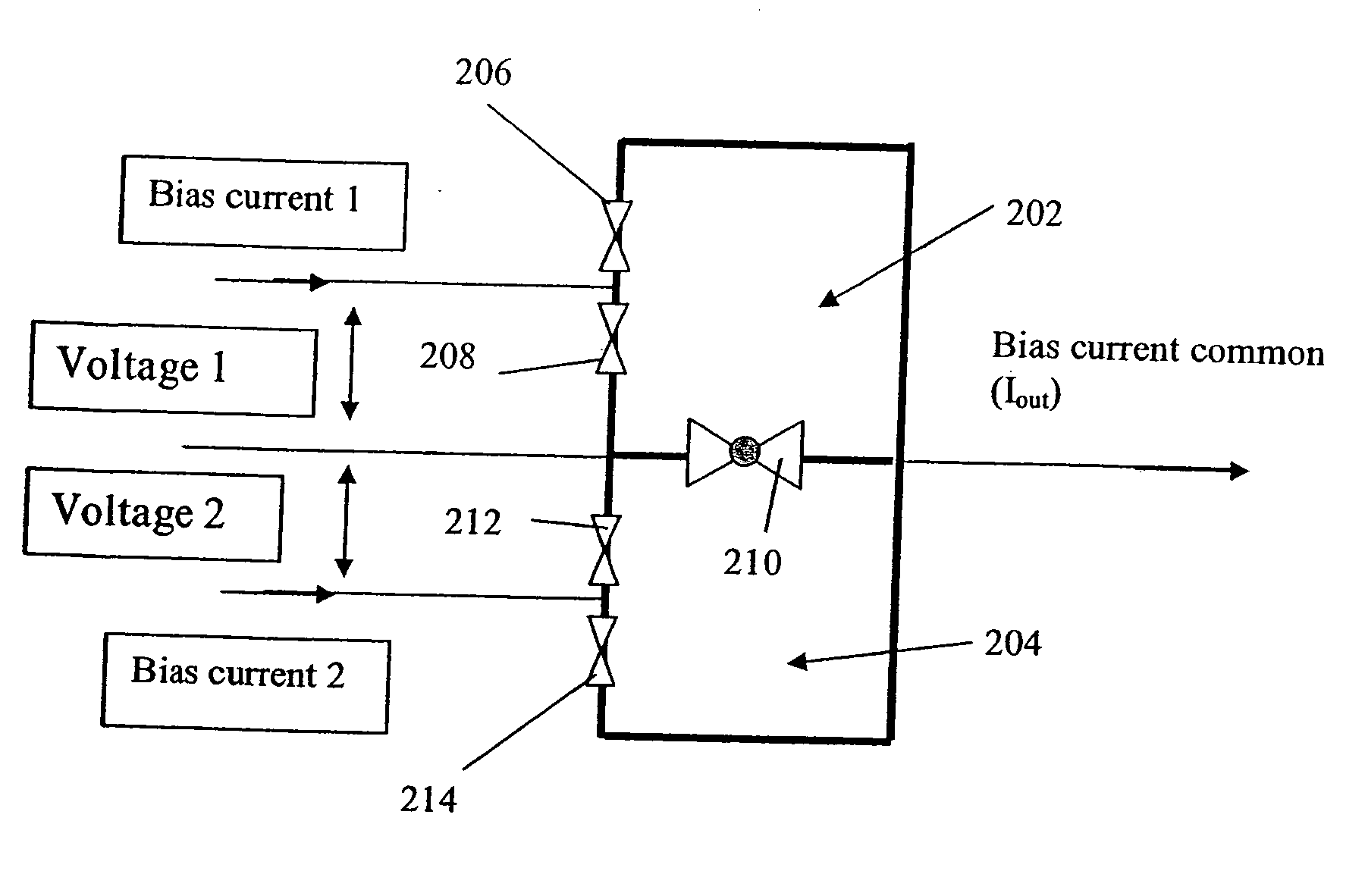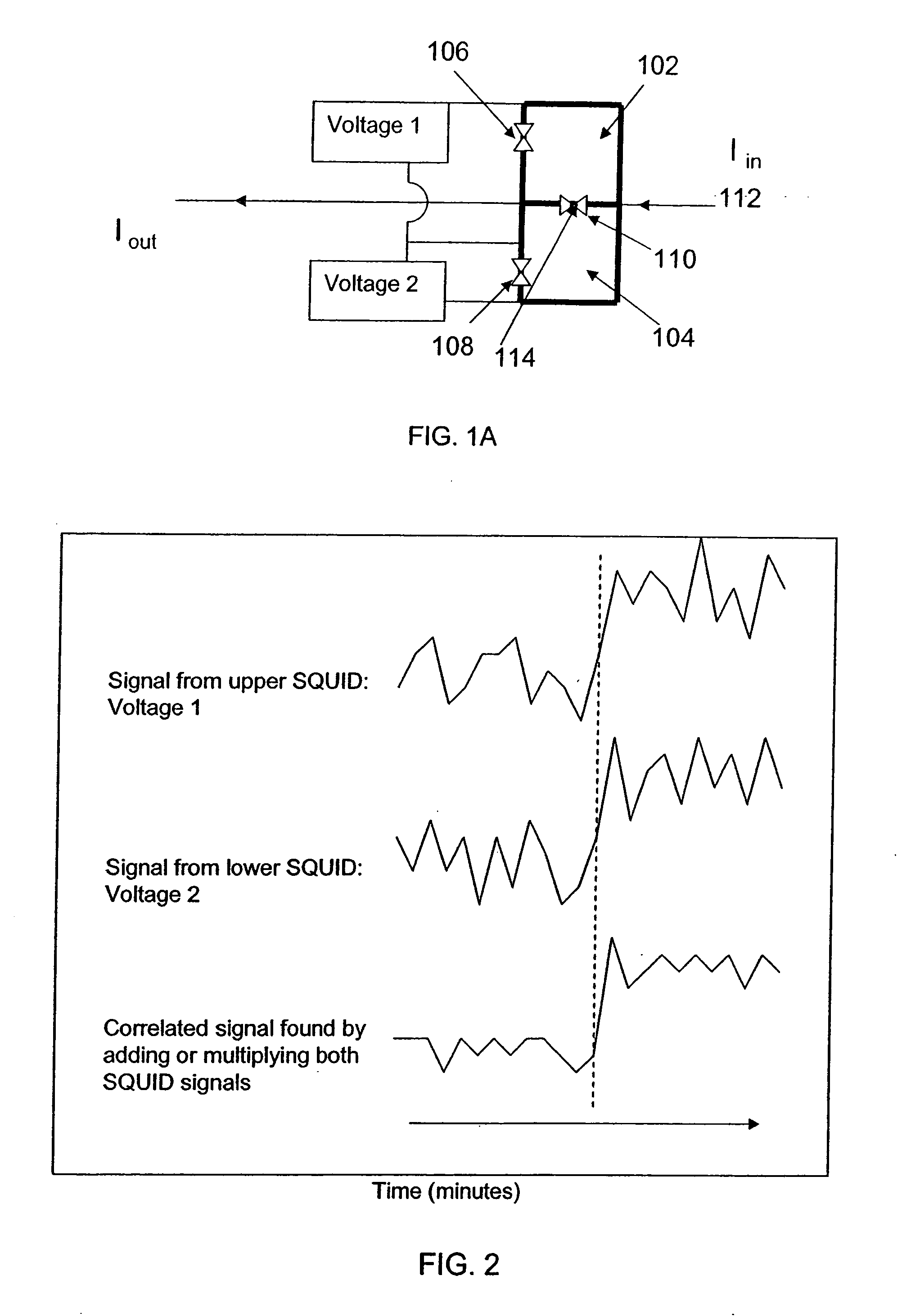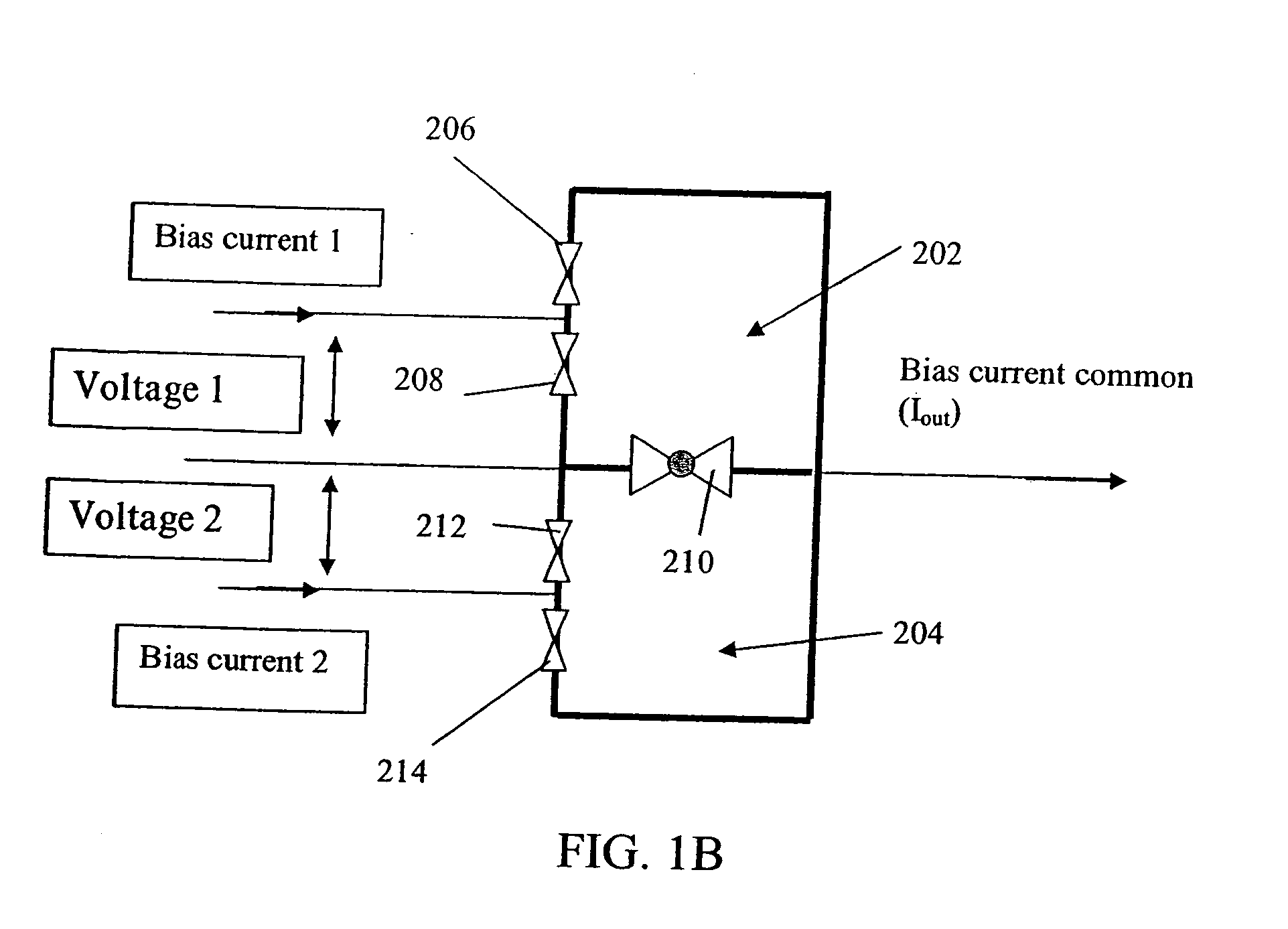Multiple SQUID magnetometer
a magnetometer and squid technology, applied in the field of squid magnetometers, can solve the problems of limited sensitivity of squid magnetometers and measurement longer than 1 second does not improve sensitivity
- Summary
- Abstract
- Description
- Claims
- Application Information
AI Technical Summary
Benefits of technology
Problems solved by technology
Method used
Image
Examples
Embodiment Construction
[0022] The present invention is based, at least in part, on the inventors' realization that by sharing a common superconducting wire and Josephson Junction between two or more SQUID loops in a multiple SQUID magnetometer, a correlated signal having a much greater sensitivity than that of the individual SQUID loops may be measured.
[0023]FIG. 1A is a schematic diagram showing the basic layout of a double loop SQUID magnetometer in accordance with the present invention. As shown in this figure, a typical double SQUID magnetometer includes a first SQUID loop 102 and a second SQUID loop 104 connected by superconducting wires. The double SQUID magnetometer includes three Josephson Junctions 106, 108, 110, one of which 110 is shared between the two SQUID loops 102, 104. In some respects, physically, this may look like a traditional gradiometer, which has been used in the past to cancel background magnetic fields and magnetic field noise. However, the polarizing magnetic field in a gradiom...
PUM
 Login to View More
Login to View More Abstract
Description
Claims
Application Information
 Login to View More
Login to View More - R&D
- Intellectual Property
- Life Sciences
- Materials
- Tech Scout
- Unparalleled Data Quality
- Higher Quality Content
- 60% Fewer Hallucinations
Browse by: Latest US Patents, China's latest patents, Technical Efficacy Thesaurus, Application Domain, Technology Topic, Popular Technical Reports.
© 2025 PatSnap. All rights reserved.Legal|Privacy policy|Modern Slavery Act Transparency Statement|Sitemap|About US| Contact US: help@patsnap.com



